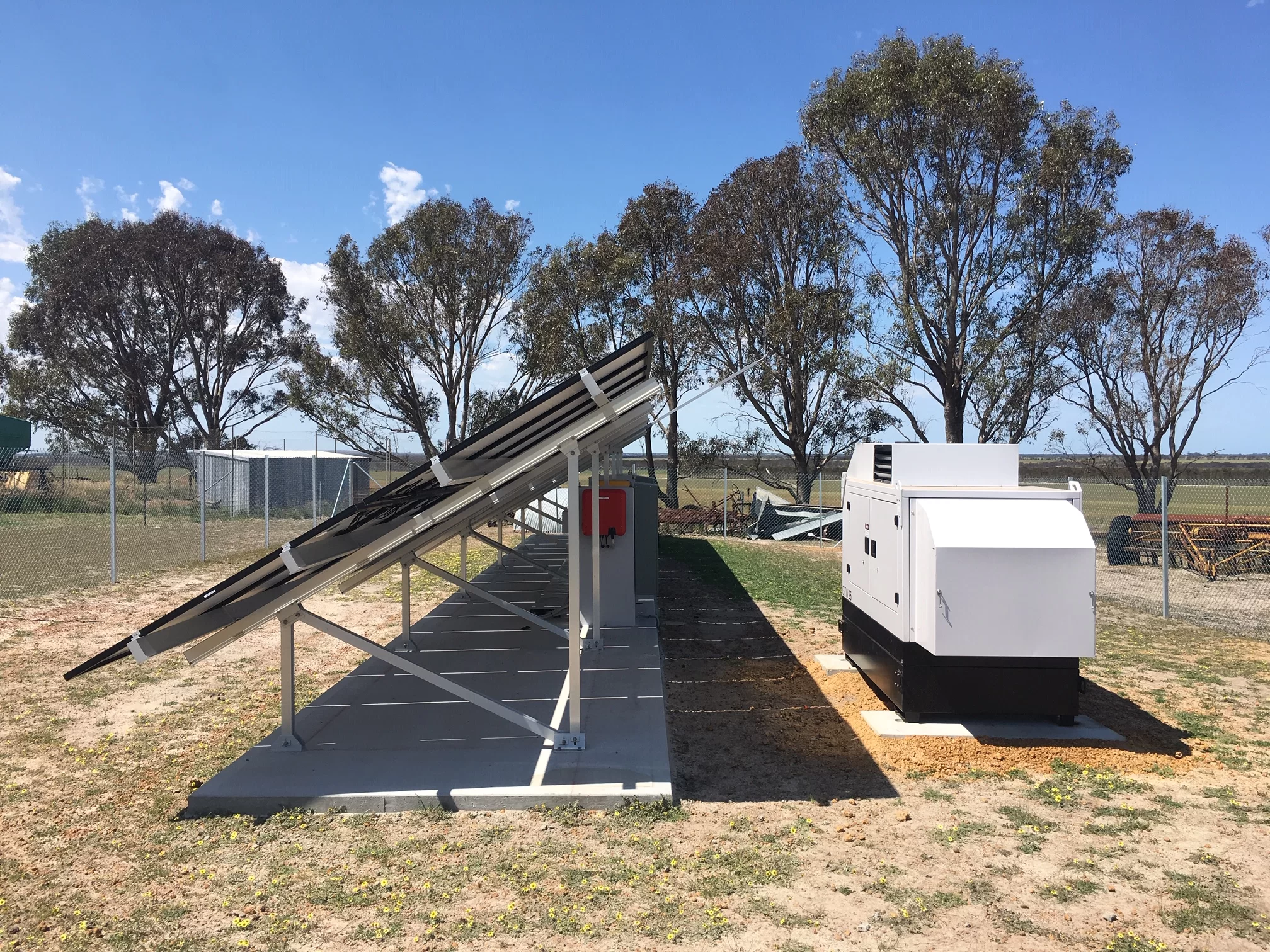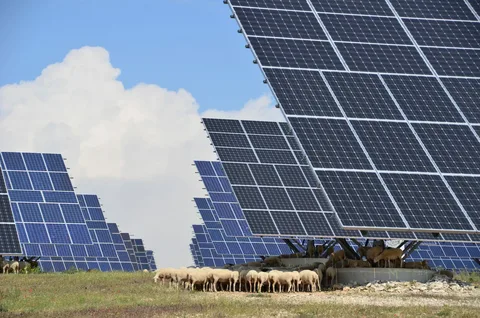Are you considering a stand-alone power system for your home? If so, you are making a wise decision. Stand-alone power systems are becoming increasingly popular due to their many benefits. From cost savings to environmental impact, stand-alone power systems offer a variety of advantages that you should pay attention to. In this blog post, we will explore 13 reasons you should consider stand alone power systems for your home. Keep reading to learn more about the benefits of stand-alone power systems for your home.
Independent From The Grid
One of the primary advantages of using stand-alone power systems is that they provide complete independence from the grid. This means you’ll never have to worry about power outages caused by a grid failure or scheduled maintenance. With your power source, you’ll have the peace of mind of knowing that you’re in control of your electricity supply.
Moreover, using stand-alone power systems also means you won’t have to pay utility bills, which can add up quickly over time. You’ll save money on monthly electricity expenses and be able to channel those savings towards other expenses.
Independence from the grid also provides an additional layer of security. If there are issues with the power grid or a natural disaster, you won’t be left without electricity, as your stand-alone system will continue to operate seamlessly.
Overall, independence from the grid provides homeowners with many benefits. From saving money on monthly utility bills to ensuring that you have a constant source of electricity, stand-alone power systems offer numerous advantages that traditional grid-connected systems can’t match.
More Efficient
Stand-alone power systems are known for being more efficient than traditional grid-connected systems. This is because they are designed to produce energy on-site and deliver it directly to the home without any losses or inefficiencies from transmitting energy over long distances. With a stand-alone system, the energy is generated, stored and used within the same system, resulting in less energy waste and higher overall efficiency.
Furthermore, most stand-alone power systems utilize the latest technologies, such as solar panels, wind turbines and battery storage, which are more efficient than older, fossil fuel-based technologies. For example, solar panels are now more efficient than ever, converting up to 22% of the sun’s energy into usable electricity.
By using a stand-alone power system, you’ll not only save money on your energy bills, but you’ll also be doing your part to reduce your carbon footprint. The efficiency of these systems means that they generate less greenhouse gas emissions and help you lead a more sustainable lifestyle. With rising energy costs and increasing concerns about climate change, investing in a stand-alone power system is a smart move for your wallet and the planet.
Environmentally Friendly
One of the biggest advantages of stand-alone power systems is that they’re environmentally friendly. Unlike traditional power systems that rely on fossil fuels to generate electricity, stand-alone power systems use renewable energy sources like solar, wind, and hydropower. This means they don’t produce harmful emissions that can damage the environment and contribute to climate change.
In addition, stand-alone power systems use energy storage systems to store excess electricity generated by renewable sources. This helps reduce energy wastage, ensuring that the energy generated is efficiently used. Furthermore, renewable energy sources are renewable and never run out, ensuring a steady electricity supply without negatively impacting the environment.
Switching to stand-alone power systems can reduce your carbon footprint significantly, helping you do your bit towards environmental conservation. Not only will you be doing your part to protect the planet, but you’ll also be setting an excellent example for others to follow.
Another great aspect of stand-alone power systems is that they promote sustainability. These systems rely on renewable energy sources, which can last for years without requiring maintenance, ensuring longevity and reducing the need for new power sources to be constructed.
 By switching to stand-alone power systems, you’re making a significant step towards achieving an eco-friendly home. You’ll be doing your part towards environmental conservation and, at the same time, enjoying a reliable and steady source of energy.
By switching to stand-alone power systems, you’re making a significant step towards achieving an eco-friendly home. You’ll be doing your part towards environmental conservation and, at the same time, enjoying a reliable and steady source of energy.
Low Maintenance
One of the biggest benefits of a stand-alone power system is that it requires very little maintenance. Unlike grid-connected systems, which can be complex and require ongoing maintenance and upgrades, stand-alone systems are relatively simple and require little attention once set up.
These systems generally have fewer components than grid-connected systems, which means fewer things can go wrong. And because they are not tied to the grid, there is no need to worry about issues like voltage spikes or surges, which can damage sensitive electronic equipment.
Generally, a stand-alone power system requires just a few basic maintenance tasks. These might include cleaning the solar panels to ensure they operate at peak efficiency, checking the battery levels periodically to ensure they are charged and healthy, and occasionally replacing components like fuses or switches.
Overall, a stand-alone power system is an excellent choice for those who want to reduce their dependence on the grid and enjoy reliable, low-maintenance power for their home or business. With little attention, these systems can provide years of dependable service without breaking the bank.
Safer
One of the benefits of stand-alone power systems is that they are much safer than relying on the grid. This is because they don’t have to rely on overhead power lines, which are prone to damage during severe weather events like storms, hurricanes, and tornadoes.
With stand-alone power systems, there’s no risk of electrical shock from damaged power lines or transformers. You also won’t have to worry about the risk of electrocution if you come into contact with live wires or if your home is struck by lightning.
In addition to this, stand-alone power systems are equipped with safety features such as automatic shut-off mechanisms and over-current protection. This means that if there’s a problem with your system, it will automatically shut down to prevent any potential hazards.
Finally, because stand-alone power systems are often located closer to the home, they are much easier to maintain and troubleshoot. This means you’ll be able to identify and fix any problems before they become a safety concern.
These factors combine to make stand-alone power systems much safer and more reliable than traditional grid power. Whether you’re concerned about safety for yourself and your family or want peace of mind during power outages, a stand-alone power system is the way to go.
Scalable Stand Alone Power Systems
Another great reason to consider stand alone power systems is that they are scalable. This means that you can add more capacity to your system over time as your energy needs increase. This makes them ideal for growing families or those who plan to expand their homes.
Scalability also allows you to customize your power system to suit your needs. For example, if you plan to add an electric vehicle to your household, you can upgrade your system to include a charging station. Alternatively, if you have a home office and need to power multiple devices simultaneously, you can install additional solar panels and batteries to meet your energy needs.
Overall, the scalability of stand-alone power systems offers homeowners flexibility and peace of mind. As your needs change, you can adjust your system accordingly without worrying about being connected to the grid or dealing with power outages. So, stand-alone power systems are worth considering whether you’re planning for the future or just looking for a reliable power source.
They Have A Shorter Payback Period
One of the biggest concerns when investing in stand-alone power systems is the cost. However, the truth is that they often have a shorter payback period than you might expect. This is because you can save money on monthly electricity bills, which adds up over time.
In addition, the cost of renewable energy technologies has steadily decreased over the years. As a result, the upfront investment required for a stand-alone power system is lower than it used to be. Plus, with various tax incentives available, you may be able to recoup a significant portion of your investment within a few years.
Furthermore, stand-alone power systems require very little maintenance, contributing to a shorter payback period. With traditional power systems, you must pay for maintenance and repairs regularly. With stand-alone systems, this cost is minimal. Many systems require no maintenance at all.
Ultimately, investing in a stand-alone power system is a smart financial decision. It may require some upfront investment, but the long-term savings on electricity bills and the shorter payback period make it well worth it.
Durable
One of the main benefits of stand-alone power systems is their durability. These systems are built to last, with many components designed to withstand harsh weather conditions and extreme temperatures. This means that you can rely on your stand-alone power system for many years without worrying about costly repairs or replacements.
In addition, stand-alone power systems are often made with high-quality materials to resist wear and tear. This means that you won’t have to replace your system’s components as frequently, which can save you money in the long run.
Whether you live in an area that experiences harsh weather conditions or simply want a system that will last for many years, a stand-alone power system is a smart investment. With their durable construction and high-quality materials, these systems have been designed to provide reliable power for your home for many years.
Conclusion
In conclusion, stand-alone power systems are a great option for homeowners who want to be independent of the grid and have access to more efficient, environmentally friendly, and reliable power. They provide backup power during outages, can also be used for off-grid living, and offer tax incentives. With low maintenance and scalability, stand-alone power systems offer a shorter payback period and are a durable investment that can increase the value of your home. Consider switching to a stand-alone power system for a more sustainable and reliable power source.
Related Websites:
Articles on Blogshunt
Articles on tbablogs
Articles on Blogspeoples
Articles on Thebigblogtheory
Articles on Allcityforums

